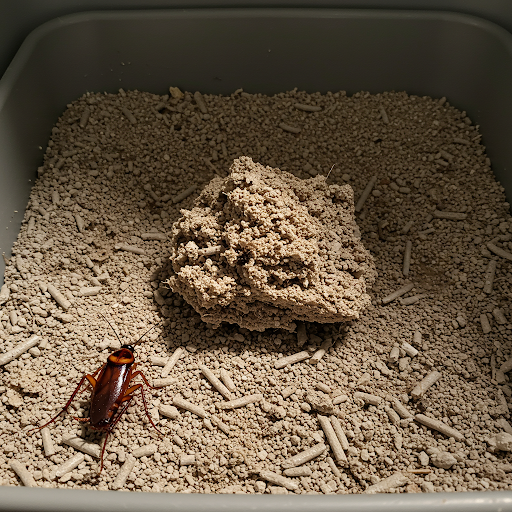If you’ve ever spotted roaches near your cat’s litter box, you’re not alone. Many pet owners wonder: Does cat litter attract roaches? The short answer is yes, it can—but not all types of litter are equally appealing to pests.

In this guide, we’ll cover:
✅ Why roaches might be drawn to your cat’s litter box
✅ Which types of litter are most (and least) attractive to pests
✅ Proven ways to roach-proof your litter area
✅ When to call a professional exterminator
Why Roaches Like Cat Litter
Roaches are attracted to:
✔ Organic matter – Clumping clay and biodegradable litters contain food particles from waste
✔ Moisture – Urine creates a damp environment roaches love
✔ Warmth – Enclosed litter boxes provide ideal breeding conditions
Most vulnerable litters:
• Clay-based clumping litter
• Corn, wheat, or pine-based biodegradable litter
• Poorly maintained boxes with waste buildup
How to Roach-Proof Your Litter Box
1. Switch to Roach-Resistant Litter
🔹 Silica gel crystals – Least attractive to pests
🔹 Non-clumping clay – Less appealing than clumping varieties
🔹 Paper-based litter – Doesn’t retain moisture like organic options
2. Maintain Impeccable Hygiene
• Scoop twice daily
• Do full litter changes weekly
• Scrub boxes with vinegar or enzyme cleaners monthly
3. Create Physical Barriers
• Place litter box in a roach-proof tray with steep sides
• Use diatomaceous earth around the area (pet-safe formula)
• Install weather stripping on nearby cracks
4. Eliminate Other Attractants
• Store cat food in airtight containers
• Fix leaky pipes near the litter area
• Use roach baits (placed away from pet access)
When to Call an Exterminator
Seek professional help if:
⚠️ You spot roaches inside the litter box
⚠️ DIY methods fail after 2-3 weeks
⚠️ You find egg casings near the area
Prevention Is Key
Roaches seek out litter boxes that offer food, water and shelter. By choosing the right litter and maintaining strict cleanliness, you can break this cycle completely.
Pro Tip: Monitor with glue traps placed near (but not in) the litter area to detect early infestations.


